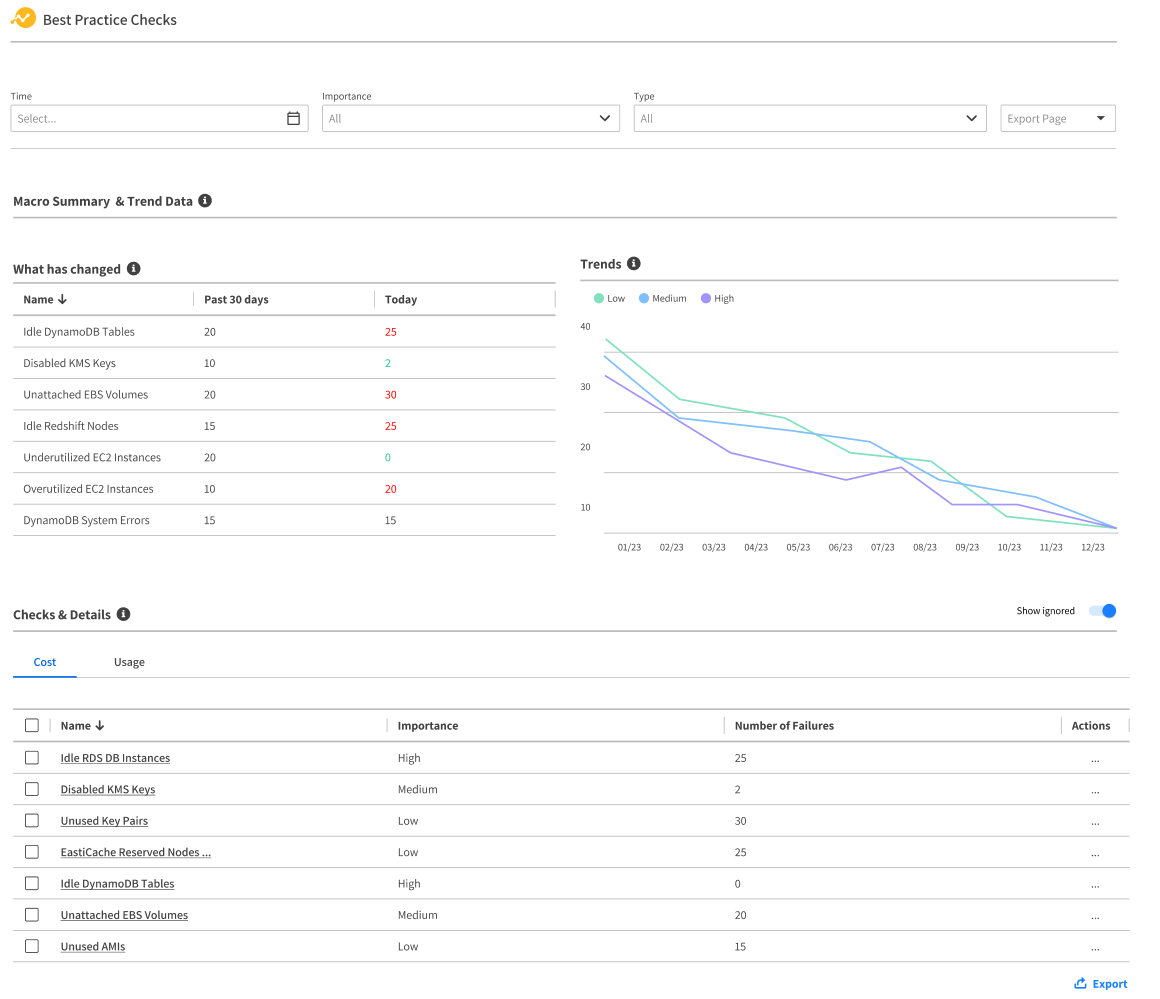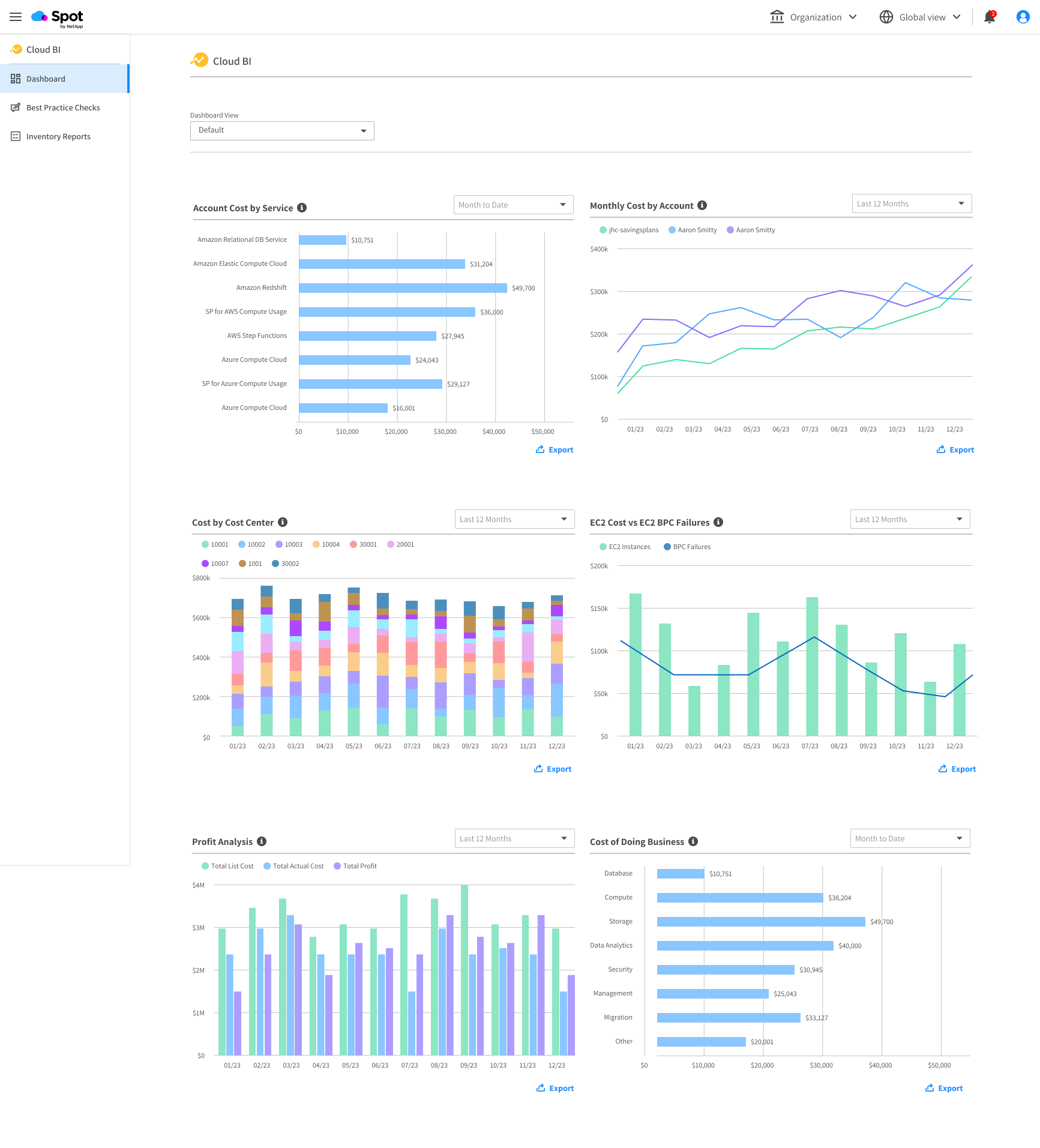
In an uncertain and turbulent economy, organizations have made it a critical priority to ensure they are managing cloud spend to stay within their cloud budgets and efficiently optimize that spend while leveraging the cloud to achieve business growth. Unfortunately, the stakeholders tasked with making sure cloud investments are efficient and effective are often overwhelmed by data that doesn’t fully show how they are spending their cloud budget, where that spend is wasted or inefficient, and ways to optimize that spend. And, arguably even more important, data alone does not provide insights into how cloud cost optimization, resource utilization and application performance impact each other and drive business results.
Whether formally adopting FinOps or less formally looking for ways to reduce and control cloud costs, organizations today all too often focus on getting more data, more reports and more alerts – only to realize that those alone won’t help them fully understand and optimize their cloud spend. FinOps teams can struggle to get alignment across the organization, while DevOps and other operations teams find themselves saddled with laborious data collection. All stakeholders wrestle with balancing competing priorities around performance, reliability and cost. Seeing those challenges, we saw the need to help organizations take a different approach.
Our strategy is to operationalize FinOps by embedding visibility, insights and automated optimization directly into operations processes and workflows in a way that makes cost management predictable, consistent and continuous rather than reactive, piecemeal and inconsistent. Powered by our artificial intelligence (AI) and machine learning (ML) algorithms, our integrated solution for FinOps enables enterprises and managed service providers (MSPs) to generate immediate cost savings and efficiencies, increase the ability to accurately budget and control their costs and continuously optimize cloud infrastructure to maximize efficiency.
The work our team has been doing to deliver on this strategy is exciting. We are in the process of integrating CloudCheckr capabilities with our Spot automation and optimization technologies to deliver a unified experience that will enhance value and efficiency for customers. Whether you’re an existing Spot customer, CloudCheckr enterprise or MSP customer, or new to both, we’ll be rolling out the solution in phases and look forward to continuing to work with and support you wherever you are on your cloud cost management and FinOps journey.
Guidance that is both meaningful and easily actionable
The amount of data and information that exists about cloud resources, configurations and costs is overwhelming. It wouldn’t be an exaggeration to say that there are millions of things you should be processing and evaluating every day.
Cutting through this noise with relevant and easily actionable information is critical to address unutilized resources, misconfigurations and more. Best practice checks (BPCs) provide a simple way deliver valuable insights and context about cloud assets including their costs, usage and performance. BPCs become even more valuable when combined with the ability to easily and continuously act on the issues and opportunities that they identify.
Our engineering teams have been hard at work incorporating CloudCheckr BPCs into the Spot console, where users will be able to both see and act on the issues and opportunities identified. Additionally, users will be able to define and apply their own custom BPCs to drive FinOps governance across the organization. These checks will be trackable and reportable, providing visibility to management on their enforcement to help ensure that all relevant stakeholders are aligned on their objectives and outcomes.
The combination of recommendations, remediation workflows and alerting in a single place will help make cloud cost and infrastructure management significantly simpler and more scalable for customers. For example, users will be able to identify applications that do not have autoscaling configured. Then, in the same console, they can easily configure other Spot modules to enable automated, data-driven scaling for virtual machines or containers.
Deep insights into resources and costs across your cloud environments
For many organizations, a critical first step in their FinOps journey is gaining meaningful visibility into cloud spend. But just knowing what you’re spending in the cloud isn’t enough. You also need to know what’s driving that spend and even more importantly understand whether that spend is efficient, inefficient or wasted.
We are working to combine CloudCheckr’s reporting capabilities with those from the Spot portfolio in a single place. This will give users significantly enhanced dashboards and reporting on cost and usage for multi-cloud environments as well as superior analytics highlighting cost saving opportunities and focused information for executive management. These dashboards and reports will be able to display and aggregate data from across all three primary cloud providers to provide a holistic view of cloud cost performance. More importantly, you’ll be able to act on that information using the Spot automated optimization modules and then see and track the impact of that on your costs—all within a single console and integrated suite. So when you see that a Kubernetes cluster is driving rapidly increasing costs, you’ll be able to bring that cluster under Spot Ocean’s management. From there, you can enable automated scaling and optimized use of spot, reserved and on-demand resources to make that cluster more cost efficient and resource efficient.
These reports will also group data across accounts and even cloud providers, delivering holistic visibility that goes beyond what is possible with only native cloud provider tooling.
Intelligent cost allocation for better business alignment and cost management
A key FinOps challenge is being able to map cloud resource costs to applications, projects, departments and internal or external customers to deliver a shared understanding of and accountability for costs incurred. Abstractions such as containers make it harder to connect costs to applications, teams and clients, and the complexity of cloud resource pricing adds further obstacles to allocating costs. That’s a challenge for enterprises that need to showback or chargeback to departments and lines of business. It’s an even greater challenge for MSPs that need to allocate costs and calculate bills for their customers.
To help our customers address those challenges, we’re making significant engineering investments to combine and enhance the CloudCheckr and Eco Reports cost allocation and billing engines, delivering a more flexible and scalable engine to better support reporting, chargeback/showback, complex billing needs and more. The revamped charge engine will be able to ingest data from all three major cloud providers to deliver a complete approach to understanding and allocating costs across diverse cloud environments. It also allows users to allocate commitment-related discount plans (e.g., reserved instances, savings plans, private pricing addendums) as well as discounts in enterprise contracts to cost centers. Users will also be able to apply custom business rules to allocate costs to support internal policies as well as contracts with external customers.
The integrated engine will also have capabilities tailored to the needs of MSPs and distributors, who must allocate costs in the context of customer contracts, margin analysis, and billing operations. It will support L1 and L2 administrator and end-customer tenancy and streamline the billing and invoicing setup process. The engine will also generate detailed reports for analysis of any issue related to billing, including cost savings allocation, cost modifications, margins, taxation issues and much more using custom-defined groupings.
Bringing this revamped billing engine into the Spot console will provide users with additional insights into cost allocation, advanced cost modeling and forecasting, and give internal and external customers a better understanding of their costs to support their planning and budgeting needs.
Broader compatibility through new industry standards
One of the first challenges for any FinOps tool or effort is figuring out how to handle the divergent billing formats used by the various cloud providers. Individual names and identifiers as well as foundational concepts like cloud accounts can vary from provider to provider. That not only makes it hard to analyze cloud costs in a consistent way if you are using multiple clouds; it also makes it hard to share information between different tools you may be using.
Thankfully, an open specification for cloud billing data is being developed to address this challenge: the FinOps Open Cost & Usage Specification (FOCUS) project within the Linux Foundation. As both a Premier member of the FinOps Foundation and a steering committee member of project FOCUS, Spot is actively involved in developing this specification and working to support it within our products. Collaborating with the enterprises and providers on the committee, we are committed to making cloud billing data easier to understand for multiple cloud providers and tools, and remove the complexity and overhead from common processes for cost allocation, chargeback, budgeting, forecasting and other important processes.
Supporting customers throughout their FinOps journey
This is just the beginning. We will be delivering many more exciting new capabilities as we build out a comprehensive solution for FinOps. We are committed to empowering our customers not only to control and optimize their costs so that each dollar spent goes further than the last, but to drive an efficient, optimized cloud environment that supports the customer experience and business growth.
Existing CloudCheckr customers who are interested in the new FinOps capabilities are encouraged to discuss their interest and strategy with their Technical Account Manager.
And if you’re at FinOps X June 27 – 30 in San Diego, make sure to stop by booth G10 to learn more and see a preview of some of the new capabilities mentioned above.



